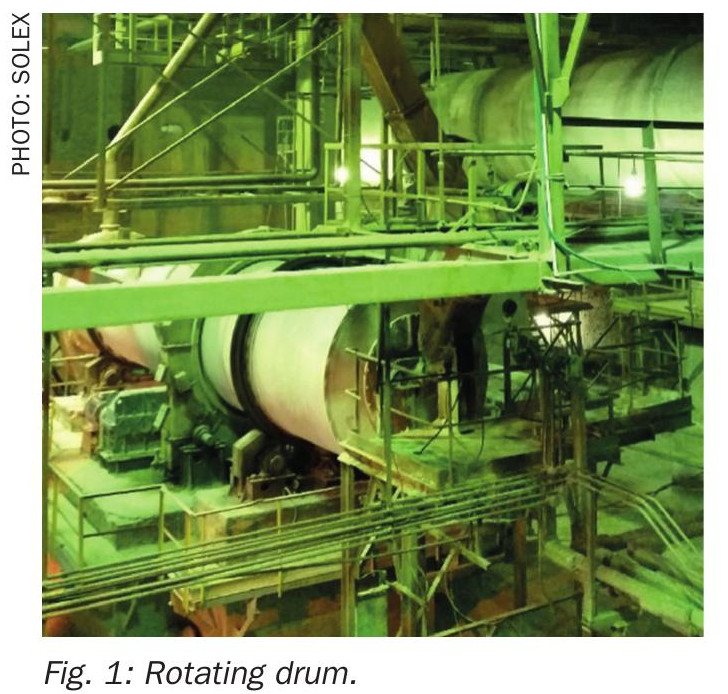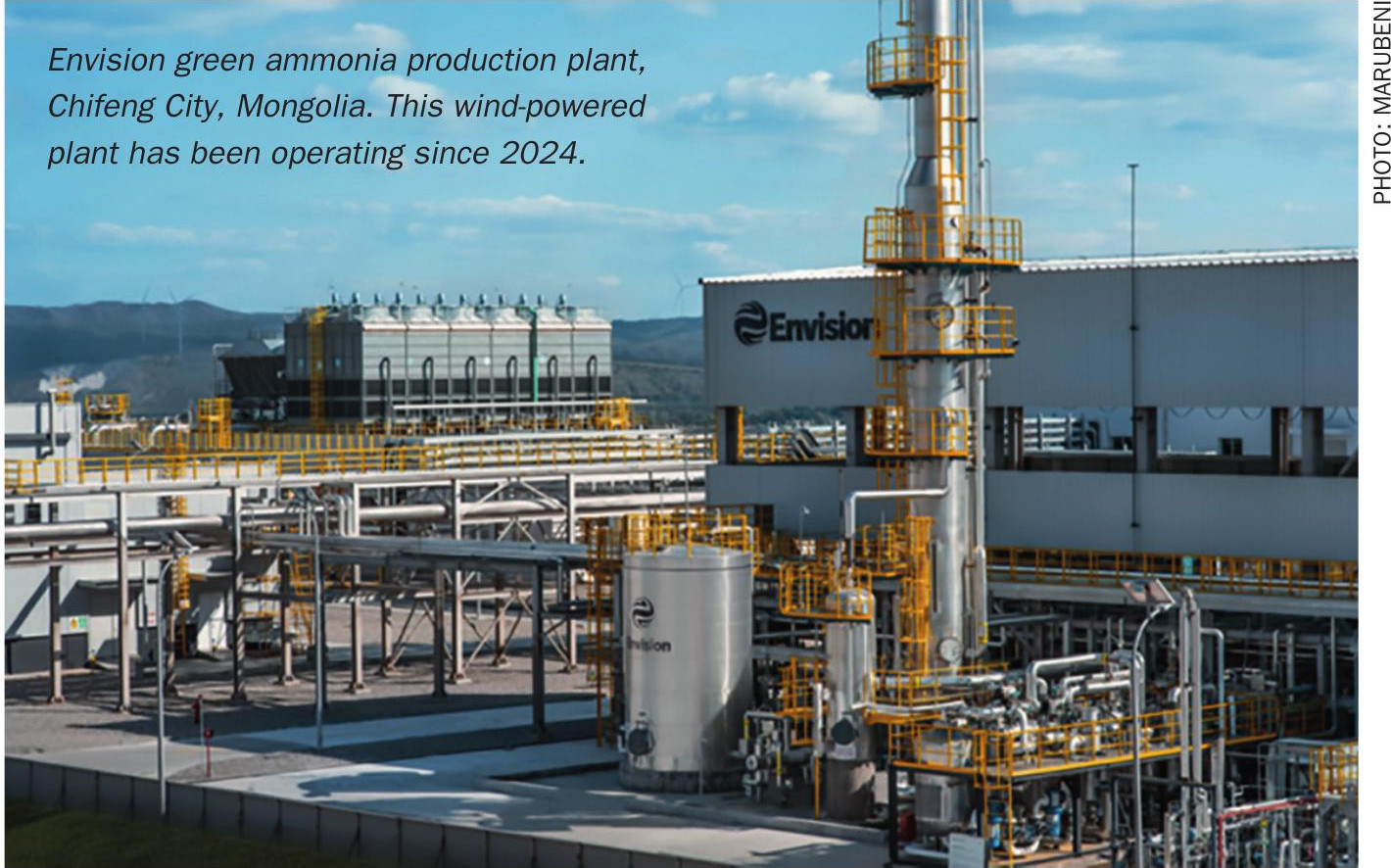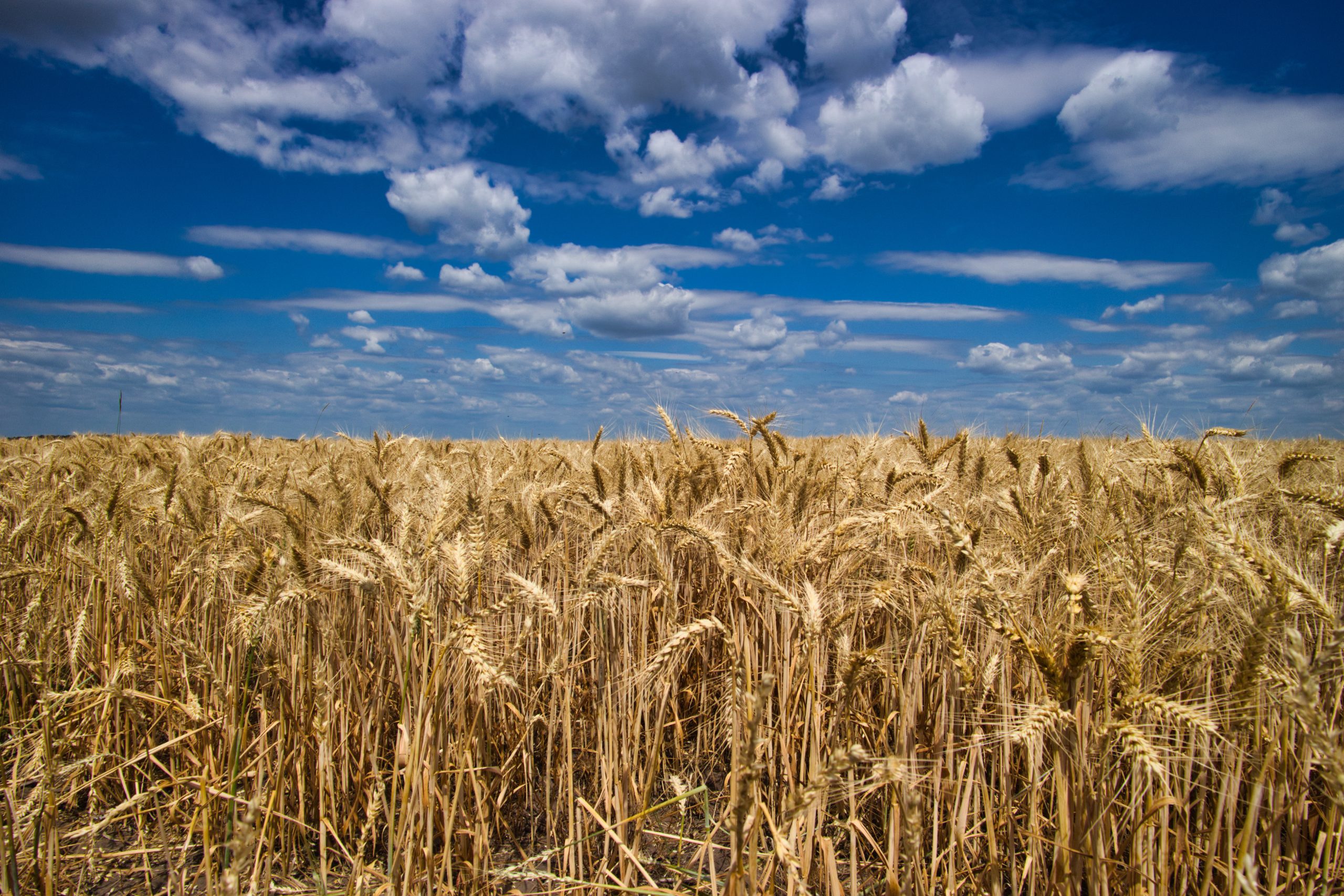Nitrogen+Syngas 395 May-Jun 2025

3 May 2025
Urea market developments
UREA
Urea market developments
Urea markets are well supplied at present in spite of Chinese export restrictions, but face volatility due to a number of trade barriers and other non-market pressures.

Tariff and other trade restrictions continue to impact on urea market volatility. Supply is seeing another round of capacity additions which will theoretically take the market into oversupply from about 2027, after a couple of tighter years due to increasing demand, but Chinese export restrictions remain a wild card.
Supply
Urea markets face a significant period of supply additions, particularly in China and Russia. After a period of industry consolidation, China has entered a new round of capacity additions and leads capacity growth in 2024. Chinese production increased by 4 million t/a to reach 67 million t/a in
2024 on the back of new capacity additions and improved utilisation rates, and in 2025, production is forecast to grow further to 67.8 million t/a, with a net capacity increase of 2.4 million t/a. However, poor margins and falling domestic prices coupled with restricted means that actual production increases will be somewhat lower than this. Nevertheless, Chinese urea capacity is expected to increase by 16.4 million t/a over the period 2025– 2029, balanced only slightly by around 4.1 million t/a of expected closures, taking capacity to 83.8 million t/a in 2029, the highest on record. Most new capacity is based on lower cost bituminous coal, while the closures are fed by more expensive anthracite, taking the bituminous share of capacity from 53% at present to 63%, and lowering overall production costs.
Elsewhere, there are a number of projects coming to fruition around the world, with Russia leading large scale project announcements. There are also new projects in Africa, Central Asia and the Middle East, as shown in Table 1, adding a potential 12.1 million t/a to the 16.4 million t/a of new capacity in China.

China has imposed export restrictions on urea, significantly reducing exports in recent years, primarily to stabilize domestic prices and support food security. These restrictions have had a notable impact on the global urea market, causing some exporters to seek alternative markets and prompting importers to diversify their supply sources. In late 2023, China implemented export restrictions, limiting total urea exports in 2024 to around 944,000 tonnes. In June 2024, China introduced additional restrictions, further reducing urea exports by 83% compared to the previous year. As a result of these restrictions, urea exports from China have plummeted, with some reports indicating a 92% yearover-year decline in August 2024. Conversely, Russian exports are soaring, rising 11% in 2024 to reach 9.5 million t/a. The absence of Chinese urea has allowed Russia to increase its market share to 17.7% in 2024, with capacity reported to be running flat out.
Demand
On the demand side, nitrogen demand is expected to rise, but concerns remain around affordability for farmers. Increasing planted areas are expected through the medium term, with Asia, Africa and Latin America leading the growth. Corn production in the US is expected to increase in 2025 as strong early exports draw down availability. Additionally, shrinking herd cattle and high cattle prices are likely to promote slaughtering rather than breeding, thus increasing crop acreage.
The outlook for Brazil’s corn and soy crops are set to hit a new record despite all the complications faced during the season. However, the demand for soybeans remains in questions with a less supportive Chinese outlook. Wheat supply is expected to take a hit due to the unfavourable weather conditions in Russia, France and the US impacting output. Rice production is estimated at an all time high due to growing area in Asia and the Americas, thus making the market oversupplied.
Overall, growing global population will continue to fuel increased crop demand, with expectations of average global food availability growth at a CAGR of 4% over the period 2024–2030. Expectations of fast-paced intensification of livestock production in emerging markets will fuel a steady increase of crop use for animal feed manufacturing. The push for higher quality meat and dairy products has led to more corn- and soybean-based feed. The global energy transition has also led to increased use of crops as feedstock for energy products, with nearly 40% of US corn being used for ethanol and nearly 50% of US soybeans being used for biofuel.
Chinese agricultural demand for urea grew by 4%, to 38.3 million t/a in 2024 due to rising planting area and use of high-density planting technology. It is expected to remain stable at 38 million t/a in 2025 but the government continues to try and curb growth in fertilizer use and overapplication over medium term. Consumption is therefore expected to peak in 2026 and decline to 36 million t/a by 2029.
Overall global nitrogen demand is forecast by CRU to rise from 117 million tonnes N in 2024 to 123 million tonnes N in 2029, with urea demand ex-China rising from 123 million tonnes product in 2024 to 137 million tonnes product in 2029.
Trade and tariff issues
There are however a number of trade and tariff issues which may impact upon urea markets. While the tariff implementation by the US on Canadian imports remains uncertain, the impact on nitrogen is expected to be minimal. However, a possible duty on Russian imports into the EU will alter trade flows as preference for African sources emerge. Persisting gas prices remain a hurdle to overcome for the EU, but an imminent threat is the emergence of polices around emissions. Additionally, the EU has imposed a duty on Chinese melamine imports.
US tariffs on imports from Canada were set to be implemented from 4 Feb 2025, but the implementation was delayed until 2 Apr 2025, and an executive order that exempts all products qualifying for USMCA preference status was later issued in early March, thus suggesting a possible exemption of nitrogen. However, the uncertainty around the implementation remains.
Canada is wholly dependent on the US for offtake of its ammonia and urea produced in excess of domestic consumption, leaving little recourse in the event of tariffs being imposed. However, net imports from Canada have shrunk over the past three years. Less than 15% of US imports originated from Canada, primarily to satisfy the needs of the Northern Plains. A potential tariff on Canadian imports is likely to raise the premium for the Northern Plains market, encouraging more domestic sourcing of nitrogen.
In Europe, the European Commission (EC) has proposed import tariffs on fertilizers arriving from Russia and Belarus in a drive to reduce import dependence on those countries and support domestic European production. Tariffs are to be applied to material not previously covered under existing tariffs, while the material on which the tariffs will be applied represented 15% of Europe’s agricultural imports from Russia in 2023, the EC said in a 28 January document.
The EC noted that buying and selling of Russian agricultural products is to remain unchanged as well as their storage in EU warehouses, transportation on EU vessels or any insurance and financing services if the material is in transit to third countries. The proposal will now be considered by the European Parliament and the Council where it requires majority voting for its approval. There are already ‘anti-dumping’ duties on Russian UAN, along with duties on UAN from the US and Trinidad & Tobago.
EU tariffs on Russia are likely to divert more Russian product towards the Americas, thus replacing the Egyptian and Algerian supply. This diversion could potentially lead to Algeria and Egypt filling the gap created from missing Russian supply to Europe. Additionally, new capacity in Turkey and increasing exports out of Iran will further allow Egypt to focus on the European market from 2025 H2. Reduced EU reliance on Russia for urea will necessitate increased reliance on Egypt and Algeria, who comprise more than two-thirds of EU imports in 2024.
There is also the question of the EU Carbon Border Adjustment Mechanism (CBAM). This attempts to ensure that imported goods are treated similarly to EU products and fairly taking into account embedded carbon emissions, enforcing the same EU emission trading scheme carbon price, and considering effective carbon prices paid outside the EU. Embedded emissions for CBAM goods will be gradually covered by the CBAM obligation, with costs increasing over the period 202633. The total CBAM tax liability in 2026 is estimated at $58/t urea, followed by an increase to $108/t in 2029, on the back of rising carbon prices and a gradual phase-out of free allowances.
Lastly, in February the EU imposed a definitive anti-dumping duty on imports of melamine from China, in a move to protect the domestic downstream industry. The anti-dumping duty for Xinjiang XLX is 12%, rising to 44.9%– 49% for the other melamine producers. All other China exports will be levied at 65.2%. China exported 578,000 tonnes of melamine in 2024, of which 16% was exported to the EU. Anti-dumping duties are expected to reduce Chinese melamine exports to the EU. Although the equivalent amount of urea is just under 300,000 tonnes, relatively insignificant to China’s demand, the duties are likely to exacerbate the oversupply situation.
Urea trade
Traded volumes of urea are set to rise this year after a dip in 2024. India continues to be the main buyer as the gap from missing Chinese supply is filled by exports from Russia. Lower prices in 2024 will climb through 2025–26 on the back of rising Indian purchases, but will be limited by returning Chinese exports and sporadic demand globally. However, as noted above, a glut of new capacity set to hit the market in 2027, which will put a cap on rising prices over the 2025-26 period.






